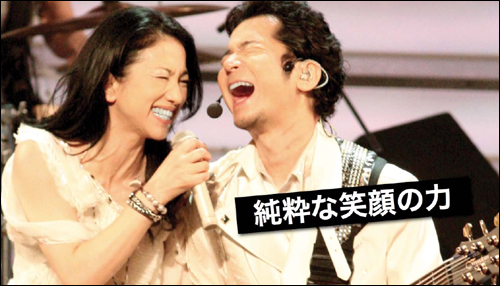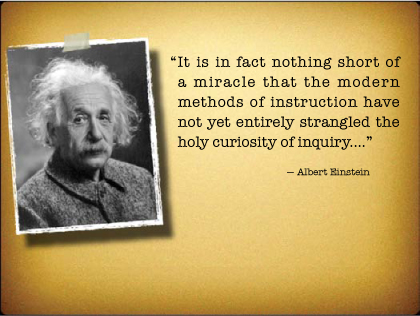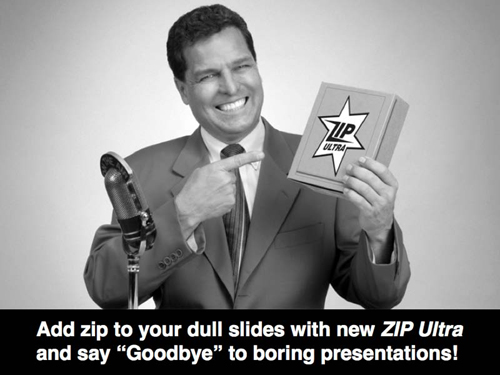Presentation Zen: Simple Ideas on Presentation Design and Delivery, 2nd Edition (Ira Katz's Library) (35 page)
Authors: Garr Reynolds

Smiles are contagious, yet they must be real. You can try to fake a smile, but people can tell when you don’t mean it. In fact, some studies show that if you give an insincere smile, audiences may perceive you as projecting an untrustworthy or hypocritical image. Martin Seligman, author of
Authentic Happiness,
says there are essentially two types of smiles, the “Duchenne smile” and the “Pan American smile.” The Duchenne smile is the genuine smile, characterized by movement of the muscles around the mouth and also the eyes. You can tell a real smile by how the skin around the eyes wrinkles up a bit. The Pan American smile is the fake smile that involves voluntary movement around the mouth only. This is the polite smile you see from people in the service industry who are doing their best but not having a great day.
We can all recognize an insincere smile. But a presenter or entertainer who actually looks happy to be there (because he or she really is) is well on the way to engaging the audience naturally. Genuine smiles show that we are happy to be there. And since people in our audience can feel what we feel, why wouldn’t we want them to feel at ease? While you may think it’s only your words that people should remember, your audience will actually recall much of what they saw, including your facial expressions, and what they felt.

Photo in slide: Jiji
The slide above (16:9 aspect ratio) features a full-screen image of Miwa Yoshida and Masa Nakamura from the legendary Japanese pop group Dreams Come True. I mention them often in Japanese seminars because I have never seen a duo display more energy and infectious, genuine smiles on stage than these two. Performing music for three hours in front of 60,000 people is different than making a presentation, of course, but these activities share the same essence. We must engage by being completely in the moment, connected, and engaged with this particular audience. The interest and passion we show though our genuine smiles and laughter will go a long way toward that meaningful engagement. (The text on the slide translates to the “Power of a genuine smile.”)
Famed physicist Michio Kaku says “We are born scientists.” What he means is we are all born insanely curious creatures—that’s how we learn. Showing your curiosity and stimulating it in others is a powerful emotion for engagement. Curiosity can be ignited and stimulated by a good presentation or it can be all but extinguished by a poor presentation. Most business presentations today fail to stimulate the curiosity of the audience members because they are dull, oneway information dumps.
Maybe this is something we learned in school, at least starting from our secondary-school days. From my experience, and based on the countless e-mails I get from teachers around the world, the problem today in many schools is that the methods of instruction do a poor job of nurturing students’ natural curiosity. This is nothing new. Einstein said many years ago that “it is in fact nothing short of a miracle that the modern methods of instruction have not yet entirely strangled the holy curiosity of inquiry.” Children go through much of their childhood driven by a natural and insatiable curiosity, but as Dr. Kaku says, in too many cases the methods of instruction in schools result in “crushing curiosity right out of the next generation.”

Kenichiro Mogi, a famous brain scientist in Japan, says the curiosity of a child is something we must keep with us always. We must keep our sense of wonder he insists. “By forgetting how to be curious we are losing something really valuable. Because curiosity is the single most important trait that brought us here today.” The best presenters and the best teachers are the ones who demonstrate their curiosity and passionate interest in their subjects. A presenter who demonstrates his own passionate curiosity inspires and cultivates the natural curiosity in others. You can’t fake curiosity and wonder. The best teachers guide, coach, inspire, and feed that natural flame of curiosity that lives within every child. The best presenters are the ones who are not afraid to show their unbridled curiosity and passionate sense of wonder about their work.
A good example of a person who presents important information with an infectious sense of curiosity and wonder is Swedish medical doctor Hans Rosling. Yes, Hans’s Gapminder-powered data visualizations are very compelling on stage. However, he shows his passionate curiosity and engages his audiences by the way he speaks, with exclamations such as:
Do you see that?
Look here!
This is amazing!
What do you think happens next?
Wasn’t that surprising?
This is the kind of language that engages the listener. Hans Rosling brings the data alive through visualizations, and taps people’s emotions by putting the information in the context of a story, making it accessible to all who will listen. He also brings his own brand of dry humor, and humor is one of the most powerful forms of emotional engagement of all.
Many people talk about technology as if it is a panacea for boring and ineffective presentations. Digital tools have, in many ways, increased the quality of communication and engagement for live presentations. This is especially true when engaging with people live on the other side of the planet via tools such as video conferencing, webinars, Skype, and so on. Yet, while our technology has evolved in dramatic ways over the last generation, our fundamental human need for connection, engagement, and relationships has not changed. Companies today promote their bells and whistles and whizzing animations as elements that are guaranteed to engage. However, we should be very skeptical about such claims. The use of more and more tools and effects often leads to distraction.
Eiji Han Shimizu is a Japanese filmmaker and creator of the award-winning film
Happy
. In his 2011 TEDxTokyo presentation, Shimizu underscored the idea that it is not always more that makes us happy, but rather it is the intentional selection of less, an aesthetic at the heart of traditional Japanese culture. “A blind march toward progress that’s based on distraction, temptation, and consumption may not bring happiness,” Shimizu says. Applying this sentiment to the modern age of presentation technology and digital tools, we could say that too many of us are marching to accept loads of software effects, tricks, and techniques in the name of “progress” and “engagement.” As more digital tools become available at a faster pace, it may be the intentional selection of less that actually leads to the most engagement and the best presentations.

No matter what the digital toolmakers say, engagement is much more about you and your ideas, not about software features and presentation techniques. (Image in slide above from iStockphoto.com.)
Gihan Perera
Author of the best-selling book
Webinar Smarts: The Smart Way for Professional Speakers, Trainers, Thought Leaders and Business Professionals to Deliver Engaging and Profitable Webinars
.
Webinar expert Gihan Perera offers advice on how to run an effective webinar that engages people.

Webinars (seminars delivered over the Internet) are very popular today, both for promotional and educational purposes. They cost very little to prepare and present, and save travel time and costs for both you and your participants.
They do have some traps for the unwary, though—even if you are an experienced presenter. You have to put more work into your presentation slides, manage the energy of the audience differently, and operate the technology competently.
Here are seven techniques for being more effective and engaging in a webinar.
1. Be relevant.
If I conducted a webinar that guaranteed to tell you the winning numbers for next weekend’s lottery, I would have your attention even with scratchy audio, a slow Internet connection, busy slides, bullet points, clip art, and ugly fonts! So understand your audience, and solve their problems, answer their questions, and add value. Substance trumps style every time. But don’t settle for one or the other—excel at both.
This is especially important for webinars, because webinar audiences want information and education. They don’t come to be motivated, inspired, or entertained (it’s a bonus if they get that as well). Rather, they come for rock-solid takeaway value they can use to tackle their questions, challenges, problems, and aspirations.
2. Use more slides.
In a face-to-face presentation, your slides are a visual aid; in a webinar, they are the visuals. So use more slides than you normally would. This keeps your audience’s interest and provides visual reinforcement to your words.
Broadly, each slide should match what you’re talking about at the time (much more so than in a face-to-face presentation, where some slides can be just a backdrop). If you really want a number, then aim for roughly one slide per minute.
3. Be elegant with your design.
Diamonds are beautiful, pearls are elegant. In your webinar slides, aim for simple elegance rather than striking beauty. Use diagrams and models rather than bulleted lists; smaller photographs rather than full-screen pictures; plain backgrounds rather than corporate templates; and icons rather than words.
4. “Build” your slides.
Build up your complex slides as you’re talking about them. If you’re showing a graph, start with the axes, then the labels, then the bars or lines, then the highlighted points. If you’re showing a model, build it up step by step.
It’s easy to do this in PowerPoint using the Custom Animation feature (but don’t use fancy animation—just let each part “appear”). Or, simply use a series of slides that build up to the final picture.
5. Get them active.
Make your webinars active and interactive. Your audience is attending a live event, so involve them in it.
Ask them to do something simple early in your presentation. This forces them to take notice, involves them right from the start, and demonstrates that this isn’t just another boring presentation. For example, you could conduct a poll, pose a puzzle, ask them to write something, or ask some people to speak out loud (but only if you’ve asked for permission beforehand).
6. Shift energy.
As with any other presentation, design segments that shift the energy during the webinar. For example:
• Conduct online polls.
• Ask them to write or draw things.
• Stop talking for 30 seconds of reflection time.
• Show a list and ask them to mentally pick their top three priorities.
• Ask for questions.
• Hand the presentation over to a guest presenter.
• Switch from a slide show to a Web page or some other software.
Hint: Don’t do all these things in your first webinar. Build up to them over time, as you become more familiar with the technology.
7. Start before you’re ready.
Webinars can be unsettling and nerve-wracking, even for experienced presenters. The only solution to this is practice. Take the pressure off yourself by starting small. Start with small groups, not large audiences. Offer free webinars before you start charging money. Get somebody else to manage the technology for you. Write a script for what you’re going to say.
But whatever you do: Start!

Avoid bulleted slides like the first slide above—they are just not engaging. The third example is great for a live keynote-style talk, but the images will not load well in a webinar. The center example is much more visual than a bulleted list, yet it will also load quickly in a webinar. If you do use a beautiful, large photo, just be aware that it will take a few moments to appear.

You can keep people engaged with your screen and your narrative if you build your visuals. You can do this using animation features in your software or just use separate slides as illustrated above.